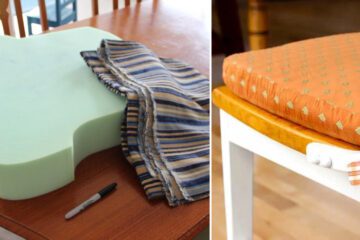Let’s face it, fellow desk warriors – swollen feet are the bane of our existence. After hours upon hours of being chained to our chairs, our feet start to feel like they’ve been through a medieval torture device. But fear not, because we’re about to embark on a journey to conquer this pesky problem once and for all.
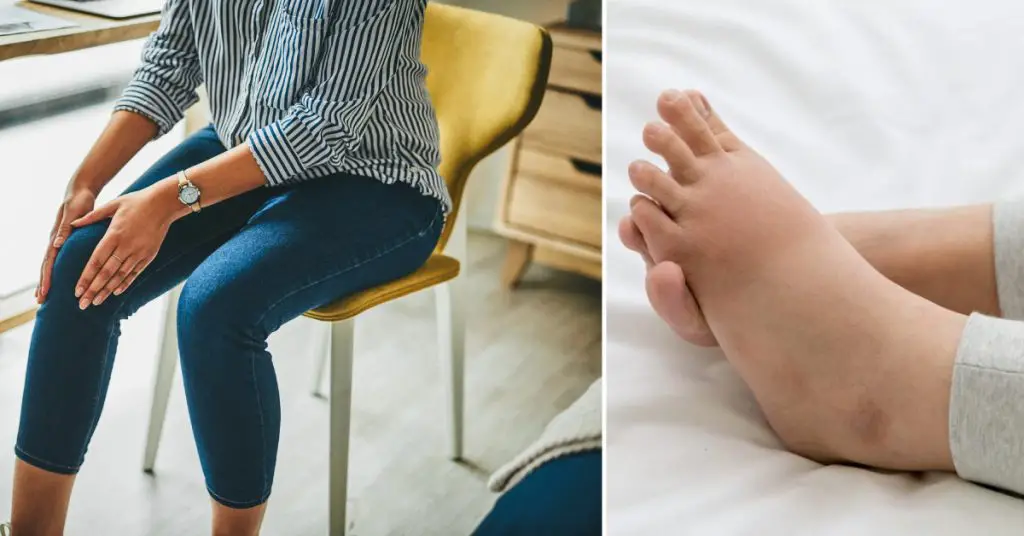
Swollen feet can be more than just an annoyance; they can impact our productivity, comfort, and even our long-term health. Understanding the root causes and employing effective preventive strategies is crucial. So, grab a comfy seat (or maybe stand up for a bit), and let’s dive into the world of how to prevent feet swelling while sitting at desk.
Key Takeaways:
- Understand the causes: gravity, reduced circulation, health conditions, and lifestyle factors.
- Implement preventive strategies: regular movement, dietary adjustments, ergonomic setup, and compression socks.
- Manage existing swelling with relaxation techniques and seek medical advice if needed.
Understanding the Causes of Feet Swelling
Here are some of the most common causes of foot swelling:
A. The Role of Gravity
Gravity, that ever-present force, plays a significant role in our feet’s swelling saga. When we sit for long periods, gravity pulls fluids down towards our feet and ankles, causing them to accumulate like a tiny, puffy ocean.
B. Reduced Muscle Movement and Circulation
Remember those hilarious dance moves you used to bust out in your living room? Well, our muscles need that kind of action to keep the blood flowing smoothly. Without regular muscle contractions, our body’s natural pumping mechanism slows down, and fluids can linger in our lower extremities like an unwanted houseguest.
C. Health Conditions Contributing to Swelling
Certain health issues can exacerbate the swelling situation. Heart failure, for instance, can cause fluid buildup throughout the body, including our poor, unsuspecting feet. Venous insufficiency and varicose veins can also disrupt the smooth flow of blood, leading to pooling and swelling.
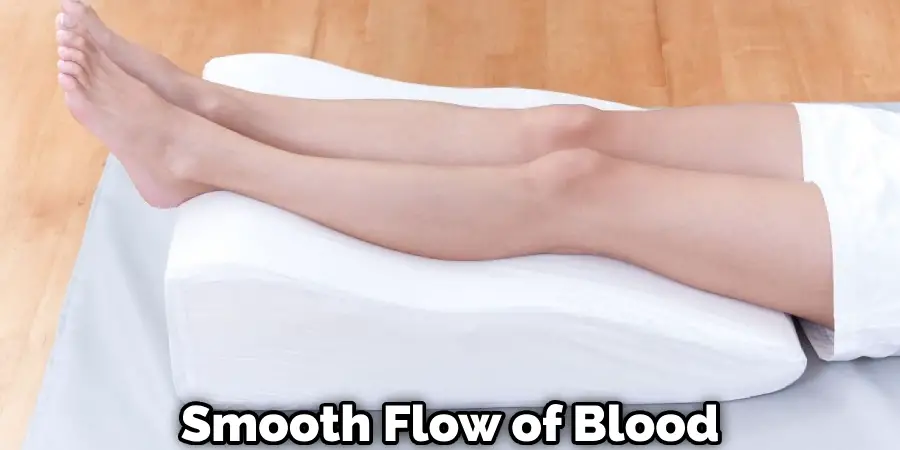
D. Lifestyle Factors
It’s not just about the desk job, folks. Our diet and hydration levels can play a role in water retention and, consequently, feet swelling. A high-sodium diet can cause our bodies to hold onto fluids like a greedy landlord, while dehydration can have a similar effect. Obesity, too, can increase the pressure on our veins, making it harder for fluids to circulate properly.
Recognizing Symptoms of Feet Swelling
Alright, let’s play a game of “Spot the Swollen Foot.” Visual clues like tightness, discomfort, and obvious puffiness are dead giveaways. If your feet feel like they’re being squeezed into tiny, invisible mittens, you might have a swelling situation on your hands (or should we say, feet?).
Pain and difficulty moving your feet are also red flags. If your toes feel like they’re being held hostage by an invisible force, it’s time to take action. Redness or warmth in the affected areas can also indicate swelling, or potentially something more serious.
It’s essential to differentiate between temporary swelling caused by prolonged sitting and chronic swelling that could signal an underlying health condition. If the swelling persists or is accompanied by other concerning symptoms, don’t hesitate to seek medical attention. Your feet will thank you (or at least stop glaring at you accusingly).
4 Reliable Strategies for How to Prevent Feet Swelling While Sitting at Desk
Here are four strategies for how to prevent feet swelling while sitting at desk:
Strategy 1: Promoting Circulation through Movement
Sitting still is the enemy, my friends. To keep those fluids flowing and prevent them from staging a mutiny in your feet, we need to get moving. Regular movement breaks are crucial, and we’re not just talking about a quick trip to the vending machine.
Try incorporating some specific exercises and stretches into your routine:
- Ankle Rolls: Roll those ankles like you’re trying to win a hula hoop contest. Clockwise, counterclockwise – mix it up!
- Calf Raises: Pretend you’re trying to reach that coveted top shelf by lifting your heels off the ground and holding for a few seconds.
- Leg Extensions: Stretch those legs out like you’re trying to trip someone across the room (but please don’t do that).
- Seated Leg Raises: Raise one leg at a time, parallel to the ground, and hold it like you’re doing a very lazy kick.
Aim to perform these exercises every 30-60 minutes to keep that blood flowing like a well-oiled machine.
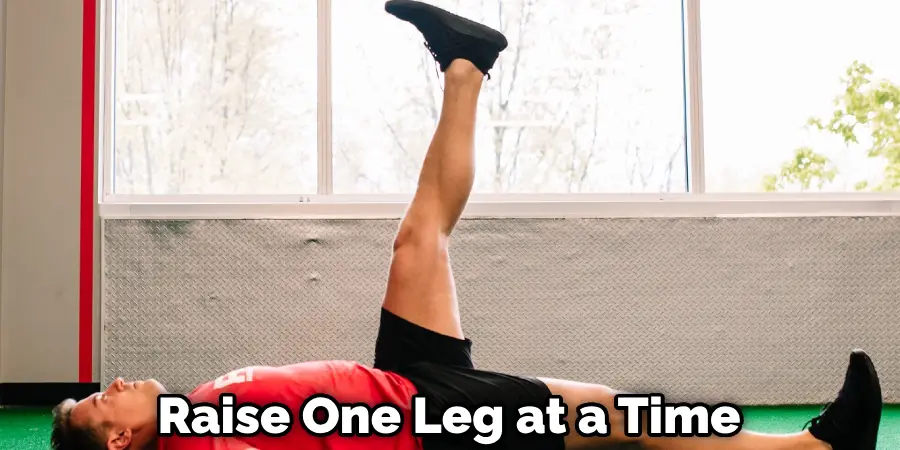
Strategy 2: Dietary Tips for Reducing Water Retention
Listen up, folks, because what you put into your body can make a world of difference when it comes to water retention and, consequently, swollen feet.
- Limit Sodium Intake: Salty snacks might be tempting, but they can cause your body to hold onto fluids like a clingy ex-partner. Do your feet a favor and go easy on the sodium.
- Stay Hydrated: Counterintuitive, we know, but drinking plenty of water can help flush out excess sodium and reduce fluid retention.
- Incorporate Potassium-Rich Foods: Bananas, avocados, and leafy greens are like superheroes for your feet, helping to counteract the effects of sodium and keep water retention at bay.
Strategy 3: Ergonomic Office Setup
Your workstation can either be your ally or your enemy in the battle against swollen feet. Let’s make sure it’s the former.
- Choosing the Right Office Chair: Look for an adjustable chair that supports your lower back and allows your feet to rest comfortably on the ground or a footrest. Ensure your knees are at a 90-degree angle or slightly lower – no more dangling legs!
- Using a Footrest: A footrest can be a game-changer if your chair doesn’t allow your feet to rest flat. It’ll elevate your legs and improve circulation, like a tiny, ergonomic throne for your feet.
- Alternatives (Standing Desks and Active Sitting Chairs): If you’re feeling adventurous, consider a standing desk or an active sitting chair. These can help you mix up your position and keep those muscles engaged, promoting better blood flow.
Strategy 4: Compression Socks or Stockings
Compression socks or stockings might look like something your grandma would wear, but they’re a secret weapon against swollen feet. By applying gentle pressure to your legs, helps promote circulation and reduce fluid buildup. Just make sure to choose the right compression level and wear them properly for maximum effectiveness.
You Can Check It Out to Fix an Office Chair That Keeps Sinking.
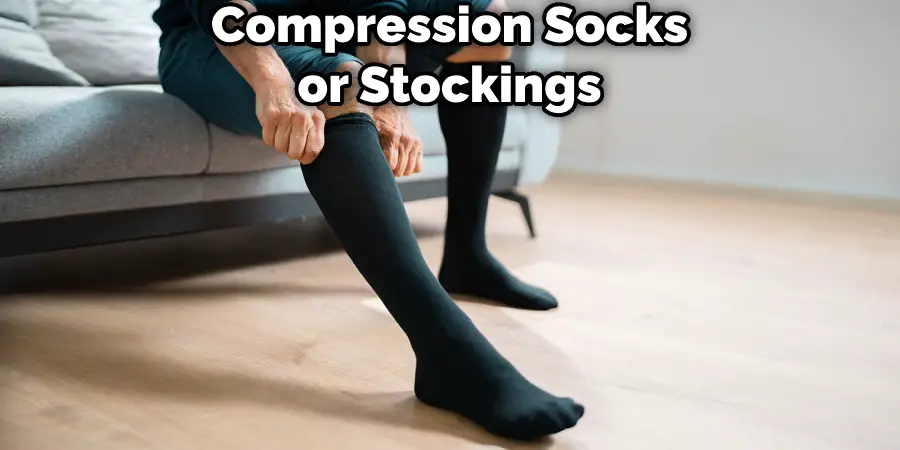
Managing Existing Swelling
Even with all the preventive measures in place, sometimes swelling happens. Don’t panic – we’ve got your back (or should we say, your feet?).
A. Relaxation Techniques
- Foot Elevation: After a long day of desk duty, prop those feet up above heart level for 15-20 minutes. This will encourage fluid drainage and reduce swelling, like giving your feet a well-deserved break.
- Self-Massage: Gently massage your feet and lower legs, like you’re giving them a tiny, loving spa treatment. This can help improve circulation and relieve tension.
B. When to Seek Medical Advice
While temporary swelling is often harmless, persistent or severe swelling could be a sign of something more serious. If the swelling doesn’t seem to improve with rest and elevation, or if it’s accompanied by pain, redness, or warmth, it’s time to consult a medical professional.
Underlying conditions like deep vein thrombosis (a fancy term for a blood clot) or other health issues could be at play, and it’s better to be safe than sorry when it comes to your feet’s well-being.
Avoiding 4 Common Mistakes
Even with the best intentions, it’s easy to fall into some common traps when it comes to preventing swollen feet. Let’s learn from the mistakes of others, shall we?
- Overlooking the Importance of Regular Movement: Sitting still for hours on end is a surefire way to invite swelling into your life. Don’t neglect those movement breaks!
- Ignoring Dietary Impacts: Your diet can have a bigger impact on swelling than you might think. Pay attention to those sodium and hydration levels.
- Neglecting an Ergonomic Office Setup: An uncomfortable chair or workstation can make the battle against swollen feet even harder. Invest in an ergonomic setup that supports your body.
- Dismissing Symptoms and Delaying Treatment: Don’t ignore those swollen feet, folks. If the problem persists or worsens, seek medical advice promptly.
You Can Check Out the Desk and Chair Height Calculator.

FAQs About How to Prevent Feet Swelling While Sitting at Desk
Why Do My Feet Swell Up When I Sit at a Desk?
Swelling of the feet when sitting at a desk for long periods is commonly caused by poor circulation and fluid buildup, resulting from prolonged inactivity, gravity-aiding fluid to pool in the lower extremities, and possibly poor seating posture that hampers blood flow. Inadequate hydration, diets high in salt, warmer temperatures, and underlying health issues can also exacerbate swelling. To mitigate this, it’s beneficial to take regular breaks to move around, elevate your feet, stay hydrated, maintain a balanced diet, and ensure you’re wearing supportive footwear. If swelling is frequent and significant, consulting a healthcare professional is advised to rule out any serious conditions.
Will Drinking Water Reduce Leg Swelling?
Yes, drinking water can help reduce leg swelling. While it might seem counterintuitive to increase fluid intake when dealing with swelling, proper hydration helps your body maintain a healthy balance of fluids. When you’re dehydrated, your body tends to retain more water, leading to swelling. By staying adequately hydrated, you encourage your body to regulate fluid retention more effectively. Additionally, drinking water helps flush out excess sodium and toxins from your body, which can also contribute to reducing swelling. However, while hydration is important, if your leg swelling is persistent or accompanied by other symptoms, it’s crucial to consult a healthcare professional to rule out underlying health issues.
What to Drink to Reduce Swelling in Feet?
To alleviate swelling in the feet, focus on hydrating effectively with water, lemon water, and herbal teas like dandelion or green tea, known for their diuretic properties. Pineapple juice can offer benefits due to bromelain, while apple cider vinegar in water, cucumber water, and berry smoothies provide anti-inflammatory effects and help with hydration and reducing water retention. Remember, these remedies can support managing swelling, but lifestyle changes and consult a healthcare professional are crucial if swelling is persistent or accompanied by other symptoms.
What is the Best Exercise for Swollen Feet?
To combat swollen feet, engaging in regular walking, performing leg elevation with ankle circles, participating in swimming or water aerobics, practicing specific yoga poses like Legs-Up-the-Wall, and cycling can be particularly effective. These activities improve circulation and encourage fluid movement, helping reduce swelling. Additionally, gentle stretching, especially of the calf muscles, can further enhance blood flow and decrease fluid retention. It’s important to adjust the intensity according to your fitness level and consult a healthcare professional if you have any underlying health conditions.
Conclusion
Swollen feet might seem like a minor inconvenience, but they can seriously hamper our productivity and overall well-being. We can keep those feet happy and healthy by understanding the causes, recognizing the symptoms, and implementing preventive strategies like regular movement, dietary adjustments, an ergonomic office setup, and compression socks or stockings.
And if swelling does occur, don’t hesitate to employ relaxation techniques like foot elevation and self-massage, or seek medical advice if necessary. Remember, your feet are the unsung heroes of your desk-bound life, carrying you through each workday. Show them some love and appreciation by taking proactive measures to prevent and manage swelling.


